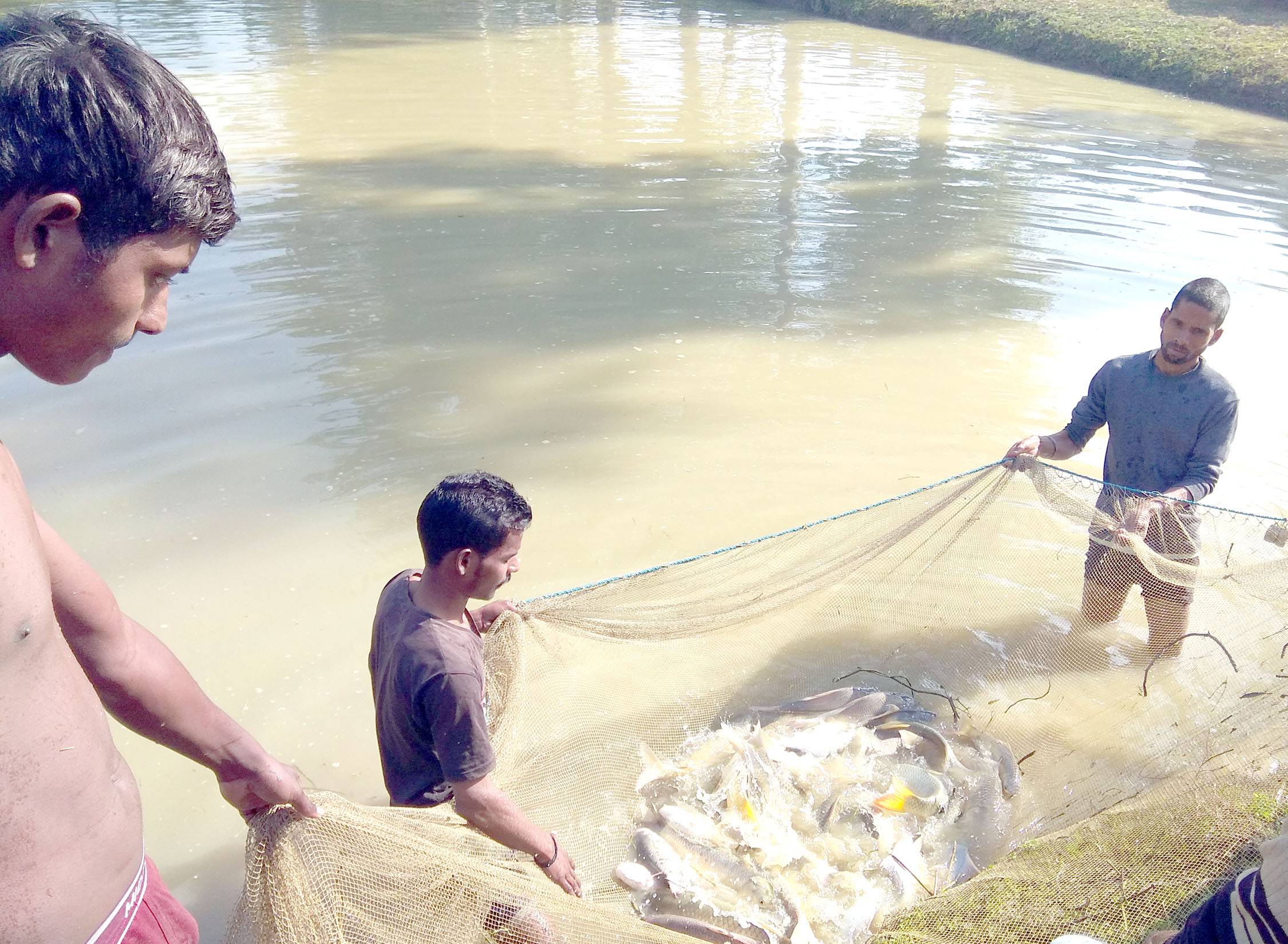In north-western states, March/April to October/November is the best period for fish growth; where smart management practices can boost production and income of farmers significantly. Summer season is favorable for fish growth, but protection against temperature exceeding 350C is important, informed Dr. Meera D. Ansal, Dean of College of Fisheries, Guru Angad Dev Veterinary & Animal Sciences University. Hence, farmers shall maintain 5-6 feet water depth during peak summer months to provide sufficient comfortable zone to the fish below the hot surface layer.
She cautioned to monitor ‘Oxygen’ levels during this period, which may fall to lethal levels during dawn due to enhanced biological activity. Hence, aerate the ponds during early hours of the day before sunrise, either by adding fresh water or using aerators, to maintain oxygen levels above 5 mg/l. If disease and fish gasping for air at water surface is observed, provide aeration, add fresh water, apply disinfectant and suspend manuring and feeding to improve the water quality. Periodic water exchange will further augment fish growth and production. Add fresh water in the ponds and use the nutrient rich pond water for irrigating the paddy fields during this period. It will improve water quality in the pond and reduce fertilizer requirement in the paddy fields as well.
Sustained plankton (natural food) production in the pond and feeding with quality feed as per recommended regime helps in achieving optimized production targets. Keep the pond rich in plankton through mixed utilization of organic manures and inorganic fertilizers. Use farm made pellet feeds to reduce feed wastage and achieve better feed conversion efficiency. In case water turns dark green, brown or greenish brown in color and a green, brown or red colored algal mat appears on the water surface, suspend manuring and feeding till the condition improves back to normal. Also check day-night variation in water pH, which may cross 9.5 during peak day hours and fall below 7.0 during night hours. Maintain optimum pH range (7.5-8.5), with lime or alum/gypsum application as per expert advice.
Farmers shall refrain from anticipating higher production through increased inputs i.e., seed, feed and manure/fertilizer. It not only enhances input cost, but also leads to less production or crop failure. Water quality deteriorates due to overstocking, overfeeding and over manuring. Further, ammonia toxicity increases with increase in temperature and pH, leading to stress and subsequently disease outbreak or mortality. Under such condition, keep the ponds well aerated, add common salt and apply gypsum/alum as per expert advice.
Adhering to the golden rule of “Prevention is Better than Cure’ for disease management, Dr. Meera advised the farmers to follow the recommended prophylactic measures with lime (50-100 kg/acre, if pH< 8.0), potassium permanganate/KMnO4 (1-2 kg/acre) or ‘CIFAX’ (400 ml/acre) to maintain fish health; take care of recommended biosecurity measures to check entry of harmful pathogen; and in case of any disease, consult an expert for proper diagnosis and treatment.










